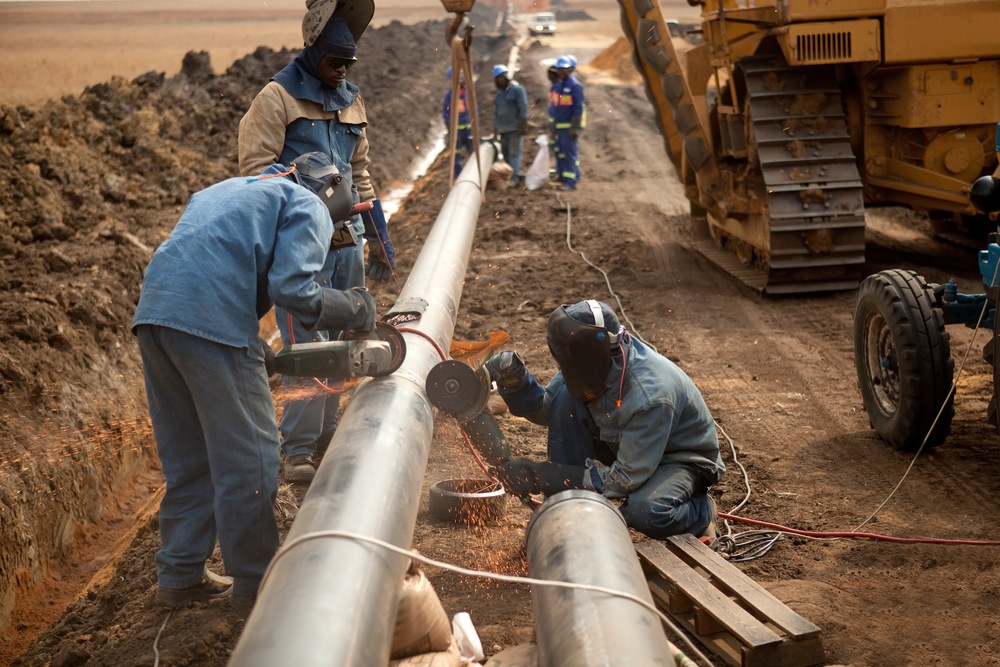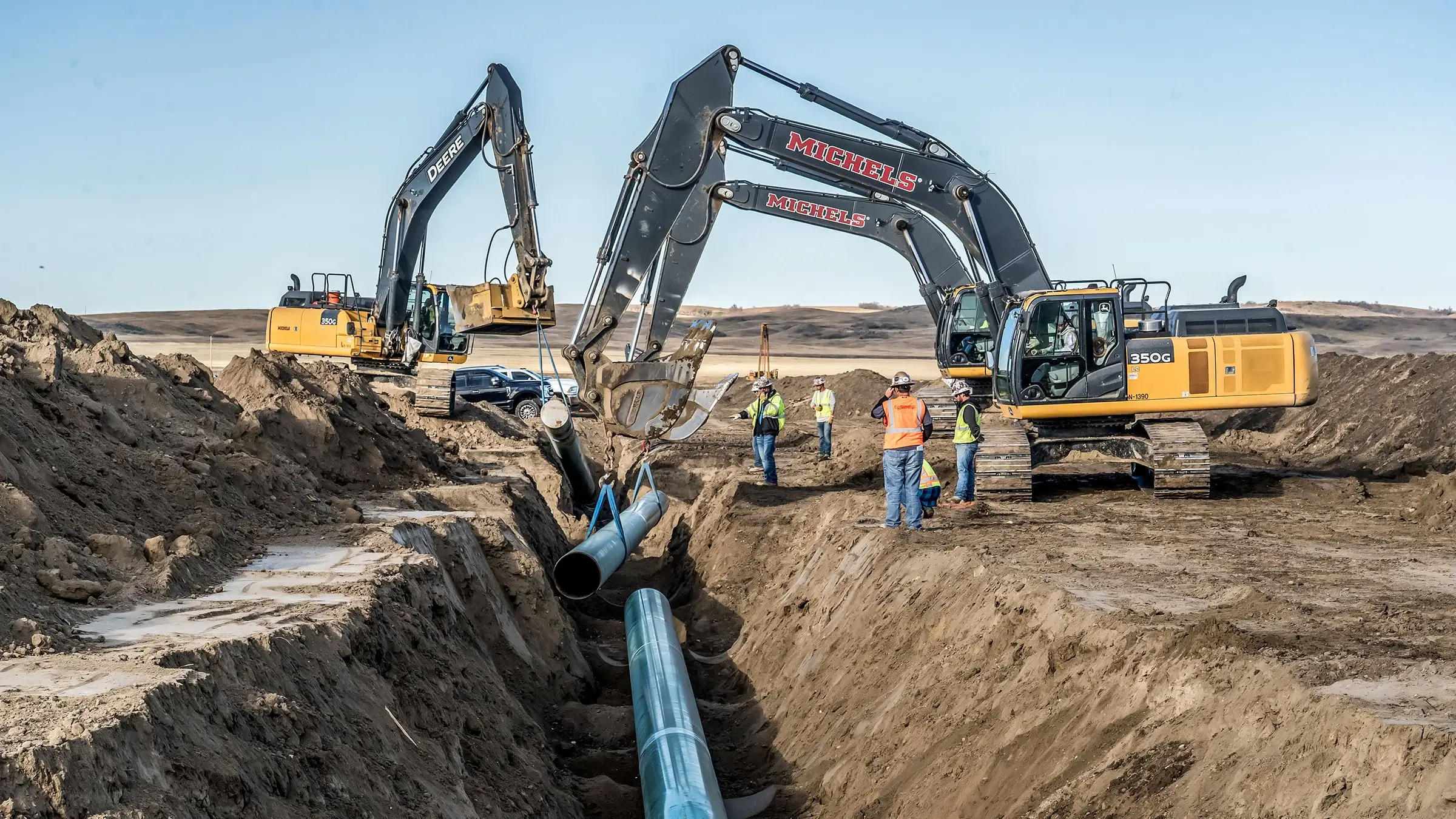How to Maintain for Pipes Installed by Creek Pipe Midland
Comprehending the Essentials of Pipes Installation: What You Need to Find Out About the Refine
Correct pipe installation is vital for any kind of pipes system. It requires cautious consideration of different aspects, consisting of material selection and adherence to neighborhood guidelines. A tactical design can stop problems like stress loss, while the right tools ensure efficient joining techniques. Nonetheless, also experienced installers can make usual blunders. Recognizing these basics can cause a much more effective and sturdy system, motivating a better check out the essential components entailed in the process.
Choosing the Right Products for Pipe Installation
When considering pipe installation, the selection of ideal products is important to guaranteeing resilience and performance. Various materials are offered, each offering distinct benefits and considerations. As an example, PVC pipelines are lightweight, immune to rust, and cost-effective, making them perfect for residential pipes. Alternatively, copper pipes, recognized for their durability and capability to stand up to heats, are often liked for heating systems.Additionally, galvanized steel pipelines supply strength and longevity, appropriate for heavy-duty applications, although they are at risk to rust over time.For underground setups, polyethylene pipes are preferred due to their adaptability and resistance to stress fracturing. Proper product selection depends on the certain needs of the project, consisting of pressure scores, temperature level variations, and the chemical nature of the fluids being transported - Creek Pipe Texas oilfield. Inevitably, notified choices relating to pipe products add significantly to the total success and long life of plumbing systems
Comprehending Local Building Codes and Laws
Exactly how can comprehending local structure codes and policies effect pipe installation? Knowledge with these codes is crucial for ensuring that pipe installations are risk-free, certified, and effective. Local building codes lay out specific requirements regarding materials, installation strategies, and precaution, which must be complied with to avoid prospective lawful problems and expensive fines.Failure to comply can cause examinations being fallen short, hold-ups in project completion, and even mandated removal of incorrectly set up pipes. Additionally, comprehending zoning legislations and guidelines can influence the type of products permitted, in addition to the techniques used for installation.Contractors and house owners alike must invest time in reviewing neighborhood guidelines before starting any type of installation task. This proactive method not just advertises safety and security however additionally boosts the overall high quality and longevity of the pipes system, eventually promoting long-lasting functionality and contentment.
Preparation Your Pipe Format and Style
Proper planning of pipe format and style is crucial for attaining an efficient pipes system. This procedure begins with assessing the particular requirements of the area, considering the location of fixtures and devices. Exact dimensions ensure that pipelines are effectively routed, decreasing bends and turns that can cause push loss.Consideration of the circulation prices and the types of products made use of is vital, as different materials have varying durability and compatibility with pipes systems. Furthermore, the developer should make up future developments or modifications to the design, permitting versatility in case of renovations.Efficient drain and air flow are likewise considerable components of the design, as they protect against clogs and guarantee correct waste removal. Finally, cooperation with local building ordinance ensures conformity and safety and security, which is extremely important in any pipes installation project.
Essential Tools and Tools for Installation
Successful pipe installation depends upon having the right tools and tools available. Necessary devices include pipe cutters for tidy cuts, wrenches for tightening up fittings, and pliers for gripping and turning pipes. In addition, a degree assurances pipes are mounted evenly, while a measuring tape aids in attaining precise lengths.For details products, a welding torch may be needed for copper pipelines, while a PVC cutter is essential for plastic alternatives. Safety and security tools, such as gloves and safety glasses, safeguards installers from prospective threats during the process.A pipeline bender can be particularly valuable for producing smooth curves without endangering stability, while a torque wrench assurances that connections are protected to the producer's specifications.Having these devices easily offered not only assists in a smoother installation procedure however additionally adds to the general toughness and functionality of the plumbing system. Proper tools is crucial in accomplishing lasting results.
Methods for Proper Pipe Joining and Securing
Attaining a safe and secure and leak-free link in between pipelines calls for careful attention to joining visit this page and securing methods. Various methods exist, each fit to different pipe products and applications (Creek Pipe contact). As an example, welding is typically employed for steel pipelines, ensuring robust links through heat fusion. In contrast, plastic pipes profit from solvent concrete or combination welding, creating strong, long-term bonds.Threaded connections prevail in both metal and plastic piping, needing accurate placement and the use of suitable sealants, such as Teflon tape or pipe dope, to stop leakages. Compression installations provide another option, where mechanical pressure secures the pipes with each other, making them quickly dismantled for maintenance.Regardless of the technique selected, proper preparation is essential. This includes cleansing pipe ends and guaranteeing they are totally free from particles. Implementing these strategies diligently will improve the long life and dependability of the pipe system, inevitably adding to its effective efficiency
Typical Errors to Avoid During Installation
During pipe installation, staying clear of common blunders is necessary for ensuring a trustworthy and reliable system. One regular mistake is look at here now stopping working to gauge and cut pipelines properly, which can result in improper fittings and leaks. Additionally, overlooking to inspect the compatibility of materials can lead to deterioration or various other damage with time. Improperly protecting joints and links can likewise create weak points in the system, causing possible failures.Another common blunder is ignoring the importance of incline and drain; pipes must be set up at the proper angle to assist in proper flow. Inadequate support for pipes can cause sagging and anxiety, affecting the honesty of the system. Eventually, ignoring neighborhood codes and guidelines can cause expensive rework and security dangers. By recognizing these pitfalls, installers can substantially improve the toughness and efficiency of pipe systems.
Upkeep Tips for Durable Pipe Systems
To ensure the longevity of pipe systems, normal inspections and cleaning are essential techniques. These steps aid recognize possible concerns before they rise into significant issues. Furthermore, employing appropriate insulation techniques can further secure pipes from temperature level variations and environmental aspects.
Routine Assessments and Cleaning
Normal assessments and cleaning are crucial for keeping the longevity and effectiveness of pipe systems. Routinely checking out pipelines for signs of corrosion, leakages, or blockages can assist recognize possible problems prior to they intensify right into expensive repair services. Cleansing pipes regularly eliminates buildup that can restrict circulation and advertise damage. It is recommended to schedule evaluations a minimum of annually, yet a lot more frequent checks might be necessary in high-usage environments. Making road graders use of expert services for extensive cleaning assurances that all debris is effectively removed. In addition, keeping documents of inspections and upkeep activities help in tracking the system's health and wellness over time - Creek Pipe HDPE installation. By focusing on these practices, home owners can boost the dependability and life expectancy of their pipe systems
Correct Insulation Strategies
Effective insulation methods play an essential role in keeping the performance and longevity of pipe systems. Correct insulation reduces warm loss in warm water pipes and avoids freezing in chilly water pipelines, substantially reducing power costs and prospective damages. Usual materials utilized for insulation include fiberglass, foam, and rubber, each offering varying levels of thermal resistance. It is important to assure that insulation is used consistently, covering all subjected locations without spaces. Additionally, securing insulation with ideal bolts helps keep its setting and efficiency gradually. Routine inspections need to be performed to recognize deterioration, assuring prompt replacements. By executing these methods, pipe systems can operate effectively and have an extensive solution life, inevitably profiting both the environment and the home owner.

Frequently Asked Inquiries
Just how Do I Figure Out the Appropriate Pipe Size for My Task?
Figuring out the suitable pipe dimension entails evaluating the project's flow demands, pressure specs, and the sort of fluid being transported. Consulting layout criteria and performing computations assurances suitable efficiency and efficiency in the installation procedure.
What Are the Environmental Effects of Various Pipe Products?

Can I Install Pipes Myself or Should I Employ an Expert?
The concern of whether to install pipes separately or hire a professional typically relies on the individual's skill degree and project intricacy. A professional may ensure conformity with guidelines and lower prospective lasting concerns.

The Length Of Time Can I Expect My Pipe Installation to Last?
The longevity of pipe installation differs substantially, usually lasting 20 to 100 years, depending upon materials, installation high quality, and upkeep. Routine inspections and correct care can boost longevity and protect against premature failures.

What Are the Indicators of a Failing Pipe System?
Indicators of a stopping working pipe system include regular leaks, uncommon water pressure changes, discolored water, mold and mildew growth, and relentless wetness. Homeowners must check these indications to prevent expensive damage and warranty prompt repairs are made.